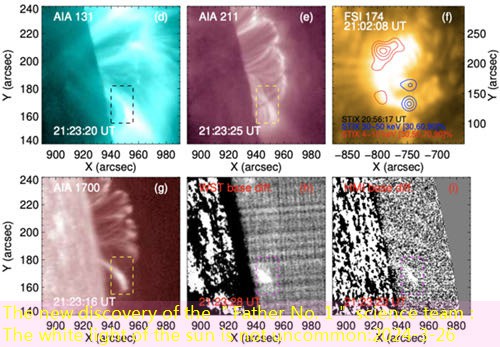Jiao Dian News Reporter learned from the Zijin Mountain Observatory of the Chinese Academy of Sciences that recently the “Father No. 1” satellite (ASO-S) The scientific team uses the Baiguang Sun Telescope (WST) Observation data reveals that the white light spots of the sun are not uncommon, and the continuous spectral radiation on the splendid ring has been captured.The discovery helps scientists to explore the physical nature of Bai Guangyan spots, and it has very important scientific significance for space weather forecast and star -shaped spots.

White light spots are usually some large -level spots, which releases strong energy, which will have an important impact on space weather.The star’s spots are basically white light spots, and they are similar to the sun’s white light spots.The first case observed observed in human history-1859The annual Kalinkon Yao spots are typical white light spots.from1859At the year to the “Father No. 1” satellite (ASO-S) Before God, there were only 300 cases of the white light of the sun reported by the sun.11It is rare for the outbreak of tens of thousands of times.However, Baiguang Sun Telescope (WST) The space observation of more than a year shows that the white light of the sun is not uncommon.
According to reports, Baiguang Sun Telescope (WST)work at360nmThe band is for the first time to continuously observe the space in this very distinctive band.This band is very important for studying the white light of the sun.”Pufu No. 1″ satellite (ASO-S) Science team pair2022Year10Monthly2023Year5During the month205indivualM1.0The above Yao Ban was analyzed and identified49indivual360nmThe incidence of white light spots, that is, the incidence of white light spotstwenty four%At the same time, some basic parameters of the white light spots are given.With the arrival of the peak of the sun, more and more white light spots have been observed. As of2023Year12At the end of the month, already120The remaining example of white light spots by the white light sun telescope (WST) Observed that this provides an excellent sample for scientists to explore the physical nature of Bai Guangyan spots.At present, the relevant results have been published in the international astronomical journal “Solar Physics” and “Period Physics Magazine Express”.
Xinhua Daily · Jiaojiao Reporter Cai Yanwen
















